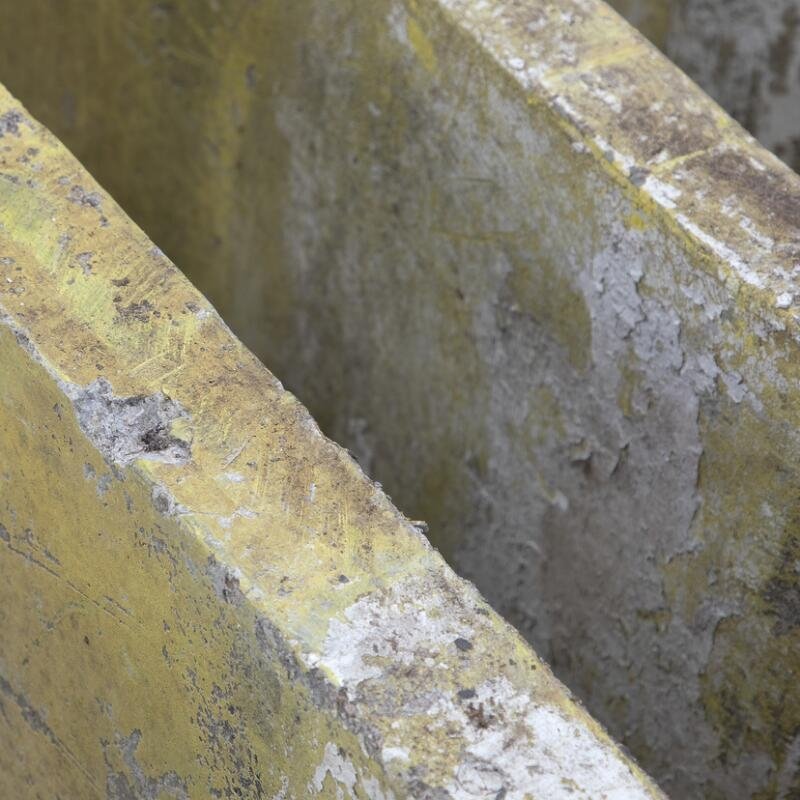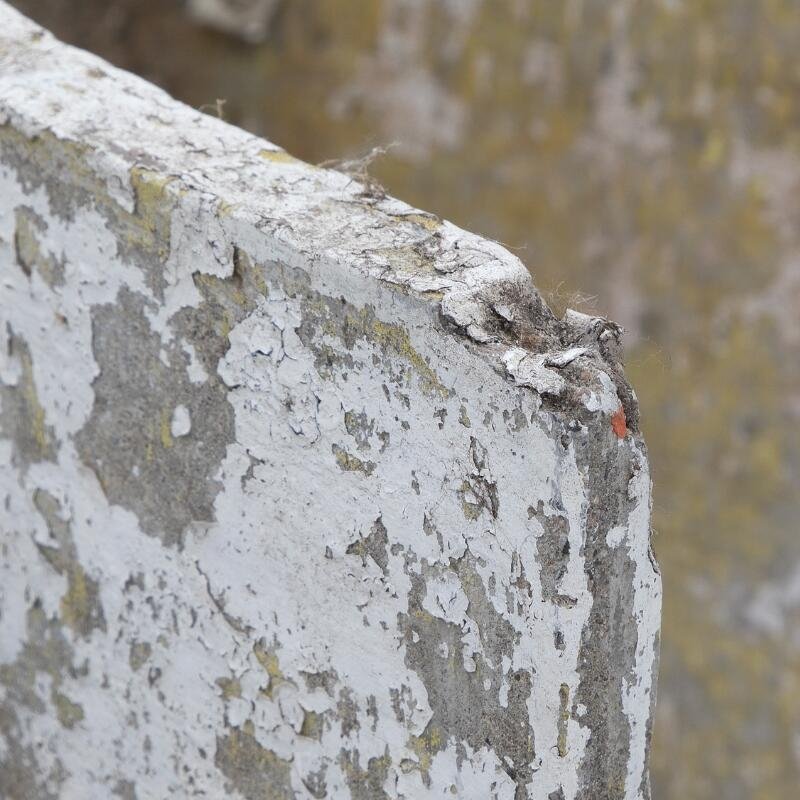Permanent Outdoor Concrete Furniture by Danish Designer Poul Kjærholm, circa 1950s
A design mystery solved, thanks to Mark Østergaard
Special thanks to reader Mark Østergaard. When we spotted these mystery constructions and asked for help identifying them…

…Østergaard, an industrial designer and engineer, knew what they were, where they were and who designed them. Based on the information Østergaard provided, we were able to find the story behind these pieces—and learn that, fascinatingly, they were originally painted red, yellow, blue or black, and they've been in place for roughly 60-70 years!
 Image: The Furniture of Poul Kjaerholm: Catalogue Raisonné
Image: The Furniture of Poul Kjaerholm: Catalogue Raisonné
Danish furniture designer Poul Kjærholm (1929 -1980) was interested in boiling the concept of furniture down to the basics. "Kjærholm understood furniture as a series of types: paradigms in which function and formal characteristics produced a general model that exists independently of materials or styles," explains author Michael Sheridan, in The Furniture of Poul Kjaerholm: Catalogue Raisonné. "The use of a module, or ideal element that can be used in different combinations and locations, was central to Kjærholm's work."
Kjærholm's wife, Hanne, was an accomplished and pioneering female architect. The two had largely separate (and successful) careers, but there was at least one notable collaboration. In the 1950s Hanne's father Lars Dam was a county administrator for the Hjørring region in Denmark's Jutland peninsula, and was responsible for overseeing rest stops and picnic areas. Disappointed by the outdoor furniture of the time, Dam commissioned the Kjærholms "to design chairs and tables that were inexpensive, durable, and easily installed in a variety of locations."
"After observing that the foundations of most roadside furniture were concrete, Kjærholm developed a table and chair of reinforced concrete that could be installed by digging a hole and burying the stem beneath the frost line. He called the system 'Beton Elementer,' or 'Concrete Elements,' emphasizing their status as simple modules that could be arranged according to circumstance. The seating element could either be installed as single chairs or in rows to make benches. The table could be used in the same manner or installed at a lower height to serve as a stool."

 Image: The Furniture of Poul Kjaerholm: Catalogue Raisonné
Image: The Furniture of Poul Kjaerholm: Catalogue Raisonné
 Image: The Furniture of Poul Kjaerholm: Catalogue Raisonné
Image: The Furniture of Poul Kjaerholm: Catalogue Raisonné
In an article on Kjærholm, British design brand Aram has more:
 Image: Sailko, CC BY 3.0
Image: Sailko, CC BY 3.0
"Rietveld's Zig Zag Chair [influenced] Kjærholm's thinking when it came to working with moulded materials - as evidenced by the range of Concrete Furniture that he designed, in collaboration with his wife, Hanne, in 1954. These concrete elements were installed, over a ten year period, at various rest-stops along the highways of Vendsyssel in Northern Demark and, in further reference to the source of his inspiration, were painted in the primary colours favoured by the De Stijl movement – red, yellow, blue, black and white."
We were able to find these decommissioned Beton Elementer chairs on this auction site:



The images are fascinating: We can see just how long they had to be to reach below the frost line; we can see that this particular set was originally painted yellow; we can see the reinforcing steel rods; we can see that there's aggregate mixed in with the concrete; we can see where the chairs eventually began to deteriorate, which presumably led to their removal.







Between 1954 and 1963, multiple examples of the Beton Elementer furniture were installed in the Hjørring, Ringkøbing, and Holbæk regions of the Jutland peninsula. In the end, they were a mere blip in Kjærholm's long career; we'll cover his better-known indoor furniture designs in another entry.
-
o7Favorite This
-
QComment
K
{Welcome
Create a Core77 Account
Already have an account? Sign In
By creating a Core77 account you confirm that you accept the Terms of Use
K
Reset Password
Please enter your email and we will send an email to reset your password.

